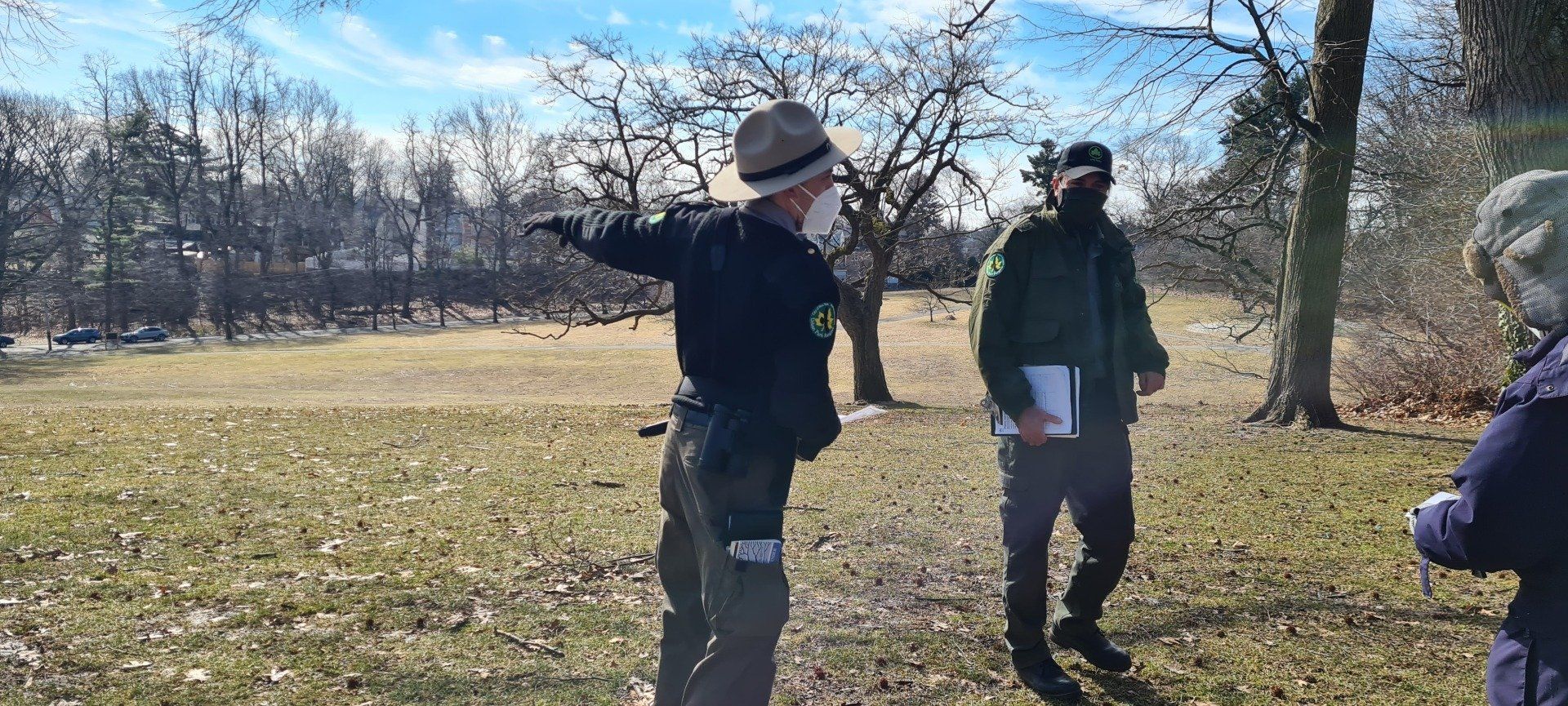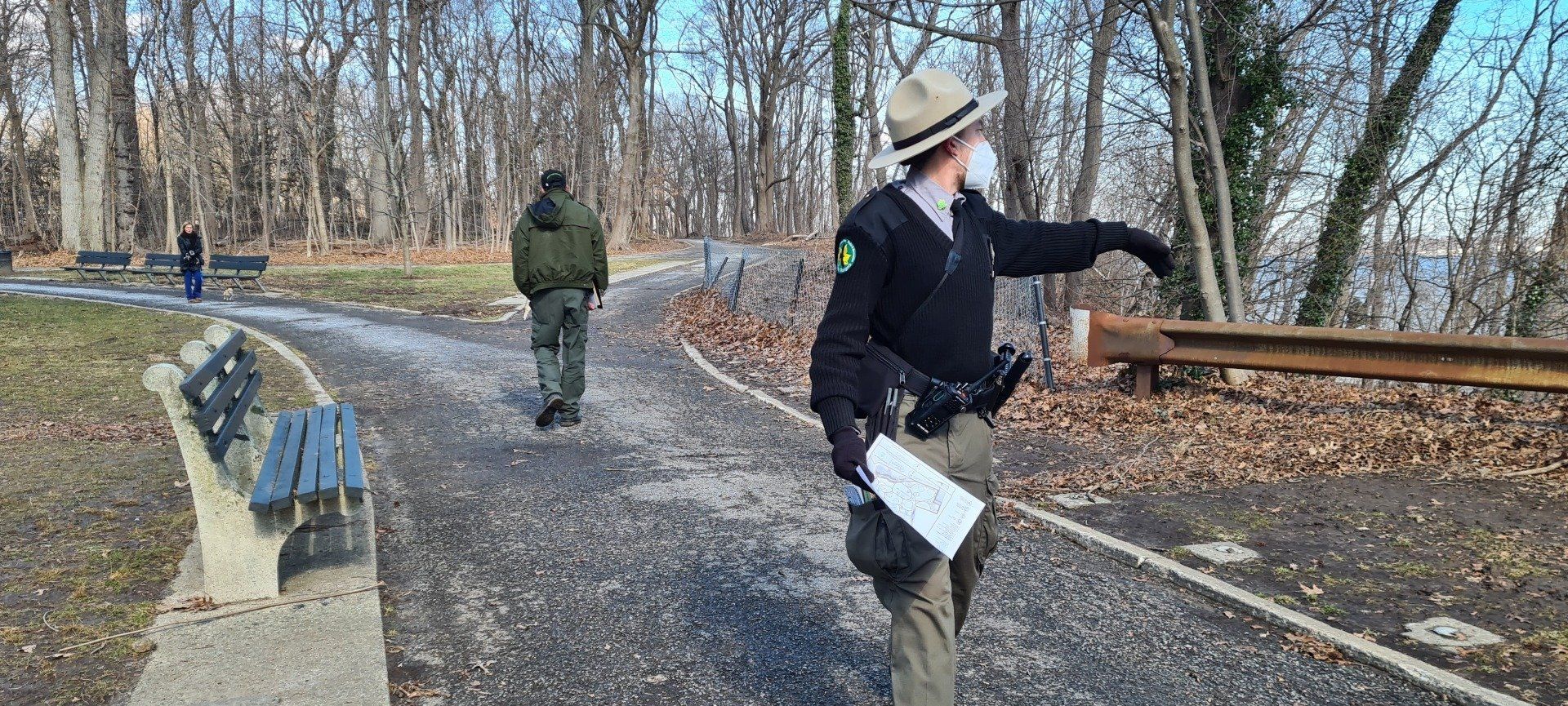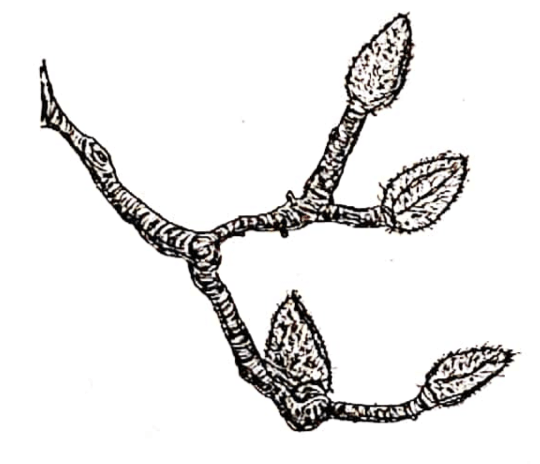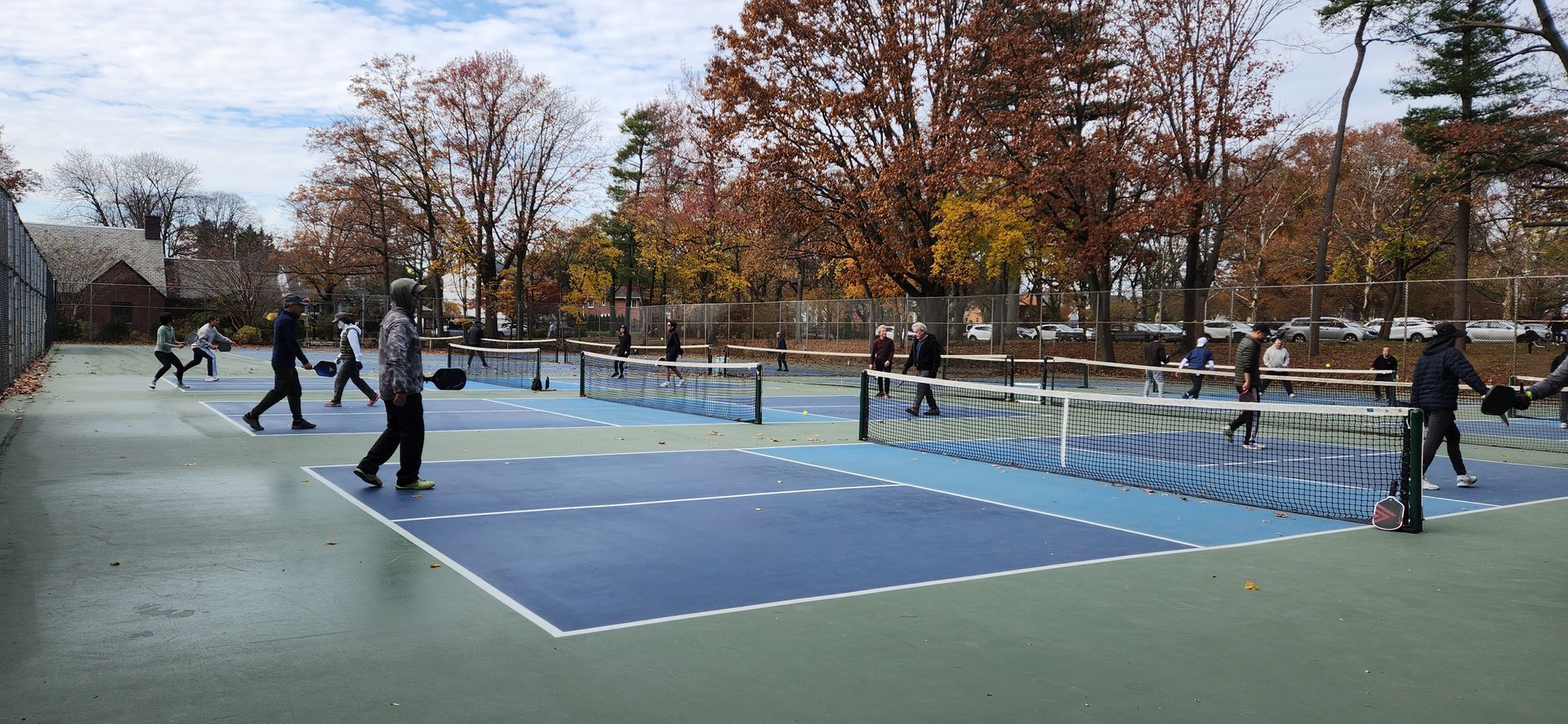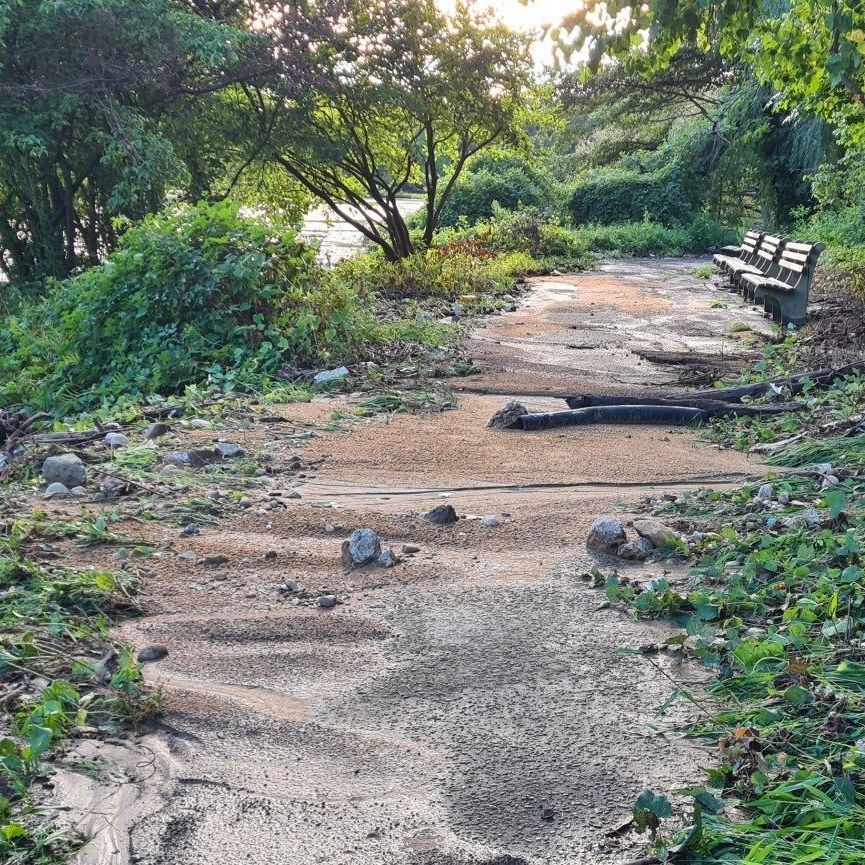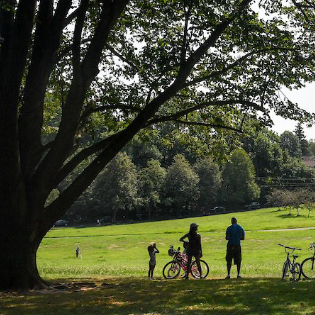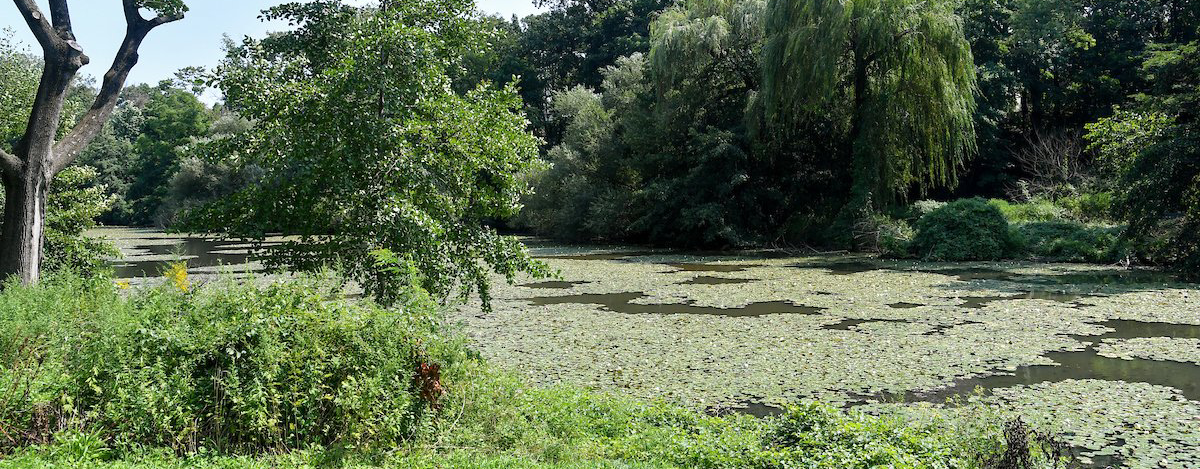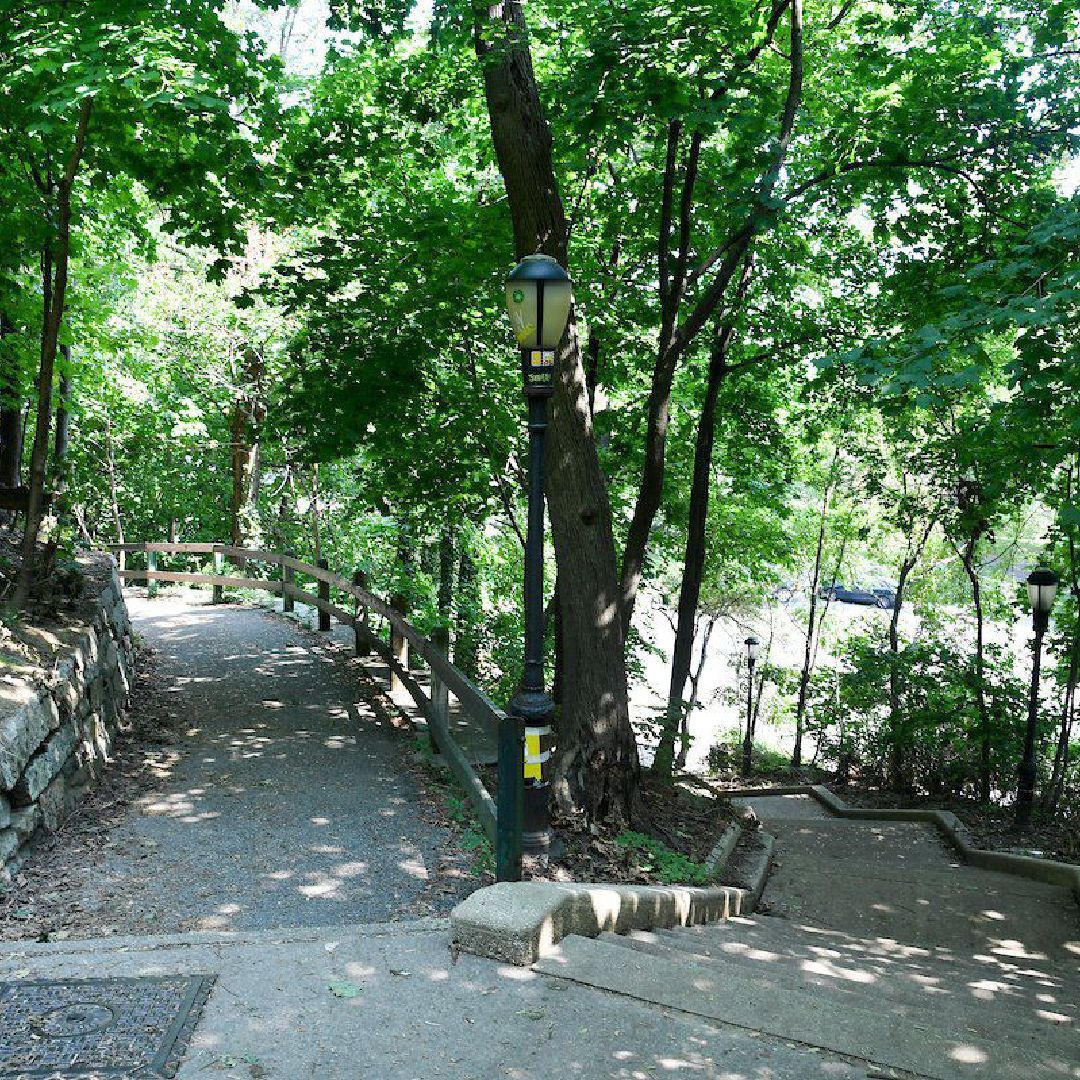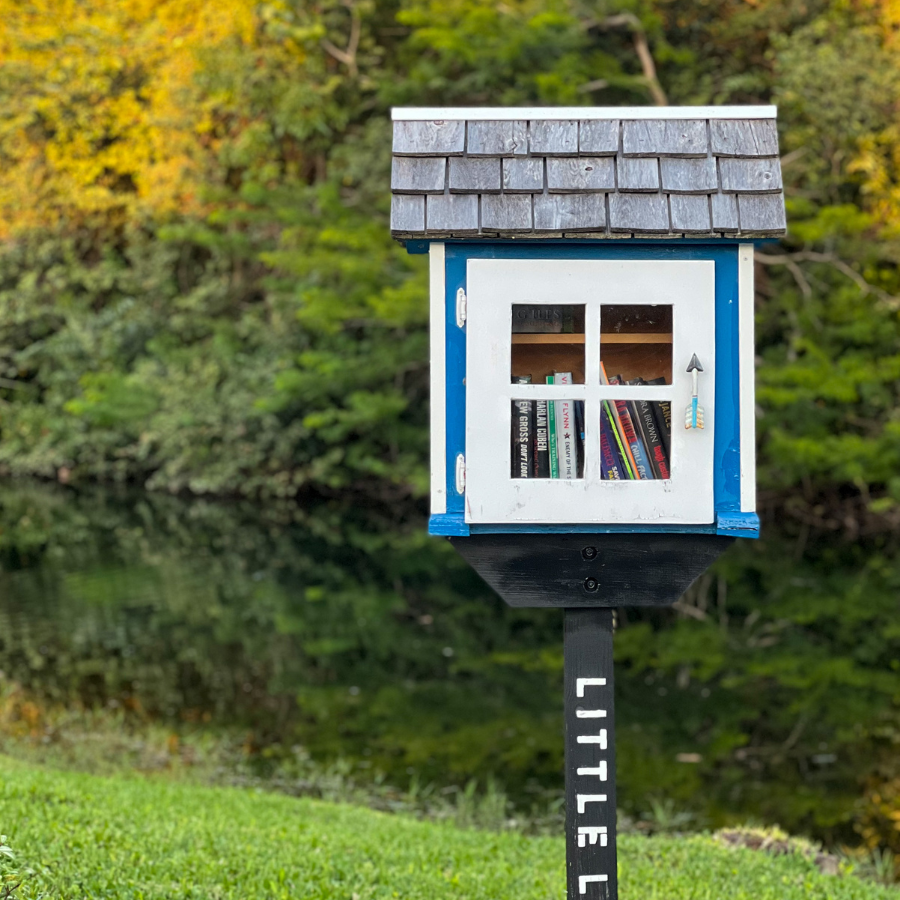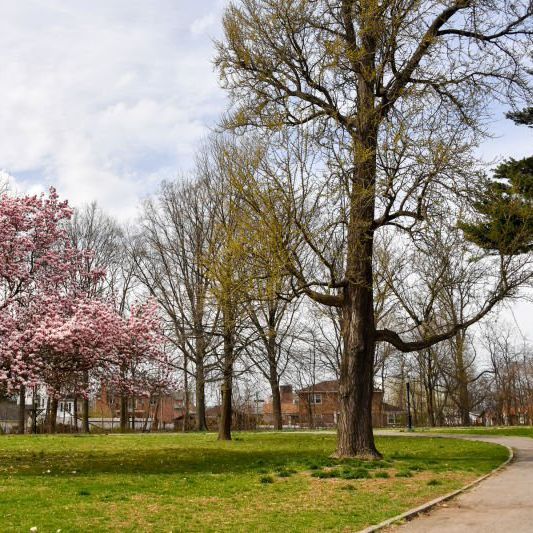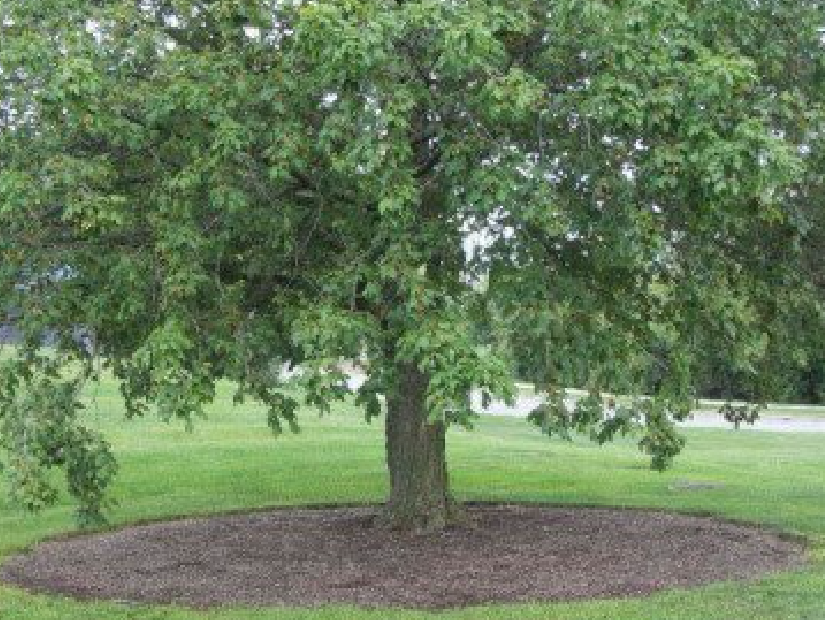Buds: are the nascent little bundles where new growth will eventually occur. They are typically slightly less woody than the rest of a stem, and often protrude. They may look like tiny leaves clasping each other in a little ball, they may be long and pointy, they may be a distinct color or texture, or they may even be concealed underneath bark or leaves. A bud will usually become a flower or a leaf or a branch when spring arrives and weather conditions become more hospitable. Buds are either lateral/axillary (on the sides of a preexisting branch) or terminal/apical (at the tip of a branch). [Left: the fuzzy buds of Magnolia wait through the winter before blooming in the springl
Winter Tree Identification: Crocheron & John Golden Park
Leafless but still very much alive and distinguishable from one another
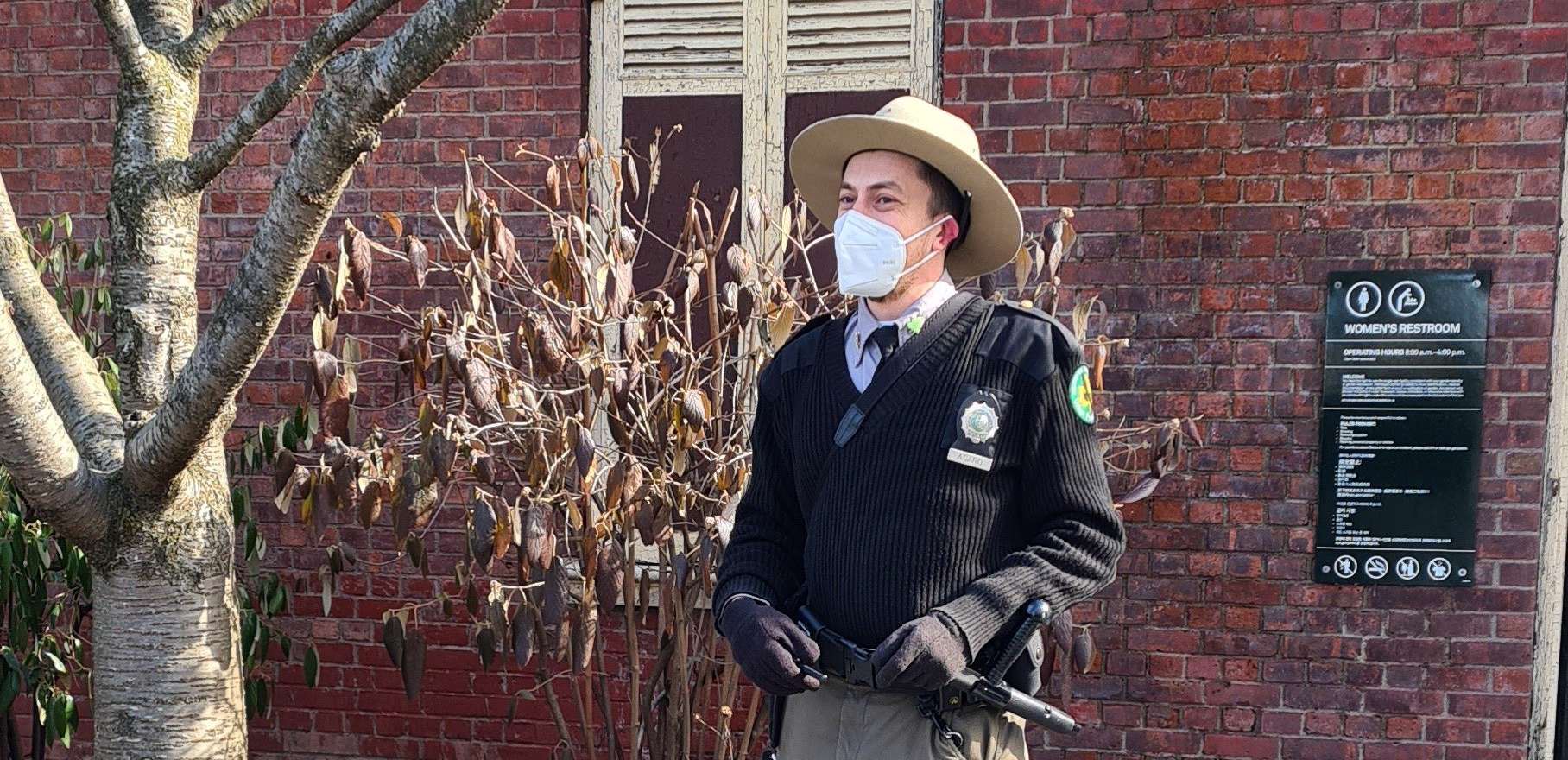
Excerpt from "Winter Tree Identification: Crocheron & John Golden Park"
By NYC Parks Ranger Sal Asaro
When we think of trees, the imagination conjures towering woody spires supporting dense green umbrellas of leafy canopy to shade us as we pass beneath them, often preoccupied with our ground-level lives. To those of us who enjoy looking up and trying to discern one tree from another, looking at leaves is our first inclination. They come in hand-held size with a diversity of distinct shapes and colors, sometimes even tastes and smells. But New York City was built in a temperate deciduous forest, where for several months on-end the majority of our trees are bare and leafless.
To many people, identifying a tree without its leaves seems a daunting and arduous task, but just like recognizing a person by their voice or their footsteps rather than looking directly at them, so too can recognizing a tree by its branches, bark, or other characteristics that persist through the coldest months provide us with a more intimate familiarity with our steadfast, photosynthetic companions. In the guide that follows, we will examine ways to identify some of our local trees during winter, when most
Notes on Terminology
Botanical language overall is notoriously dense, extensive, and full of technicalities concerning minutiae. However by not concerning ourselves with leaves at all we truncate quite a bit of these terms upfront, and by providing visual references limiting ourselves to some of our local specimens we can focus on the basics: buds, scars, branching patterns, fruit/nut/seed types, bark, and overall growth habit (silhouette).
Bud scars: During spring and summer when a branch grows longer, it grows from its terminal buds. A bud scar is a mark left on a branch where its growth was paused for the winter season. Each year a branch gains another bud scar.
Leaf scars: are where a leaf once grew but fell off of a branch. This calloused junction, once healed over, can scar in any number of species-specific shapes. Branching: can be either "opposite" meaning that from a main branch there will be two smaller branches diverging at the same spot (node) resulting in a + " shaped junction; or they can have "alternate" branching, with one branch at a time diverging, left then right then left then right etc.
Branching: can be either "opposite" meaning that from a main branch there will be two smaller branches diverging at the same spot (node) resulting in a "+" shaped junction; or they can have "alternate" branching, with one branch at a time diverging, left then right then left then right etc.
Oaks Genus: Quercus
Northern Red Oak Quercus Rubra - our most prominent native oak, a trademark of our old growth forests. A large tree with a rounded crown of stout, spreading branches. Acorn is 5/8 to 1 1/8" with a saucer-shaped cup covering less than 1/3 of the acorn, with overlapping scales.
Willow Oak Quercus phellos — Many slender branches, ending in "pin" like thin twigs, with notably distinct willow-like leaves. Even when older it will often have small branches close to the bottom of the trunk, independent of its larger main crown. Acorns 3/8 -1/2" and nearly round, saucer shaped cup. We are just outside of its native range, this tree is more likely to be found growing naturally in New Jersey south to Florida.
Pin Oak Quercus palustirs - Very conical crown with slender "pin" - like branches. Its lower branches dropping downward. Acorns 1/2" and neary round, saucer-like cup, tapering to the base.
White Oak Quercus alba - Widespread, rounded crown with near right-angled branching and a trademark "belt" of worn-looking bark on the trunk. Acorns are elongated with non-overlapping scales on the cup, and are not stalked. These are the most palatable acorns to animals, with far less tannins than that of the previously mentioned.
